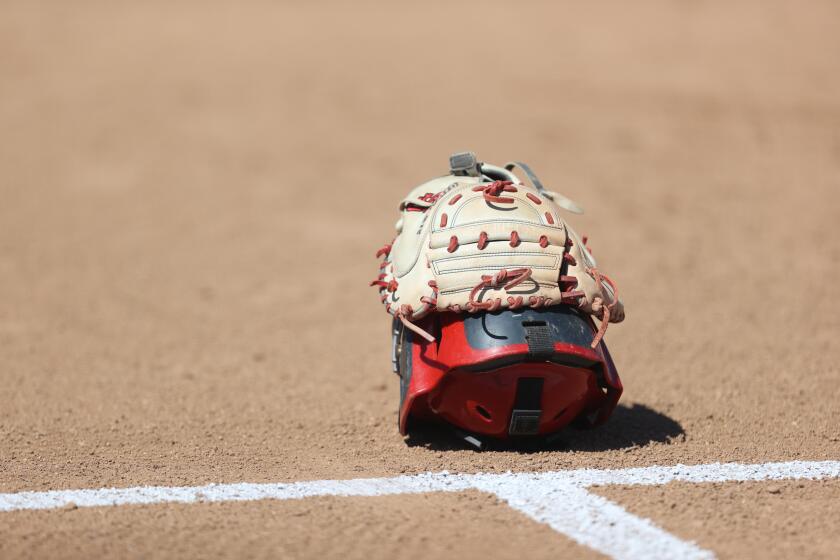Killing cormorants to save salmon: 11,000 in crosshairs of controversial program
EAST SAND ISLAND, Ore. Shots ring out boom, boom, boom, boom then there’s a splash: government agents gunning for double-crested cormorants have hit their mark again.
Federal agents have stalked this tiny uninhabited island with night-vision goggles and silencers, blasting birds on the nest. They have oiled more than 5,000 eggs to suffocate the embryos within. And now, they have taken to the water, firing at double-crested cormorants with shotguns under a federal program intended to boost juvenile salmon and steelhead survival.
They killed more than 500 cormorants in just the past week, including five Brandt’s cormorants not intended to be targeted. Under the controversial four-year federal cormorant culling program under way since Memorial Day, federal agents could eventually kill as many as 11,000 adult double-crested cormorants and destroy even more nests.
Hard at it recently were three agents with Wildlife Services, a branch of the U.S. Department of Agriculture, outfitted in orange survival suits and shooting at cormorants from their open metal skiff marked RESEARCH.
“This makes me sick,” said Deborah Jaques of Astoria, a biologist monitoring brown pelicans that also use the island. “They are shooting again.”
She piloted her Boston Whaler past the island, alive and swirling with elegant terns, brown pelicans, gulls and cormorants. The tangy smell of guano rode the breeze, and the sky overhead was laced with a stitchery of flying birds. As Jaques approached the shooters by boat, coming into their view, they stopped firing, and as she drew within shouting distance, they stored their arms on the gunwales.
Asked to discuss their work, one shooter lowered shooting earmuffs over his ears, frowned and shook his head no. Hitting the gas, they sped away.
The cormorants nest at East Sand Island, in the estuary of the Columbia on the Oregon side. It formed as a natural sand bar and was stabilized by the U.S. Army Corps of Engineers, which owns it, to protect navigation channels. The island was even enlarged with the agency’s placement of dredge material.
By now, it is a 50-acre bird paradise, home to 40 percent of the West Coast population of cormorants and the largest cormorant colony in North America. Thanks also in part to federal protection and the banning of the pesticide DDT, populations have grown from 100 breeding pairs in 1989 to about 15,000, said Bob Winters, who directs the culling program for the corps.
The birds eat a variety of fish, including anchovies. During the spring breeding season, they eat juvenile salmon on their migration to the sea, devouring an average of 11 million of the tiny fish a year. They eat anywhere from 2 to 17 percent of the outmigrating run of juvenile salmon and steelhead, depending on the run and the year, according to NOAA Fisheries.
Cormorants are protected under the U.S. Migratory Bird Treaty Act. While their numbers have exploded on the island, they have declined in coastal British Columbia and Washington, because of disturbance by people, eagles, and pollution, indicating a redistribution of the western population of double-crested cormorants, rather than an overall blowup of the population. Along the West Coast as a region, double-crested cormorants are increasing in population by about 2 percent per year. But the birds have established their stronghold on East Sand Island, where their diet has drawn federal notice.
In its most recent policy for running the Federal Columbia River Hydropower System, NOAA Fisheries called for reducing breeding pairs of cormorants to no more than 5,600 by 2018.After a number of environmental reviews and a failed court challenge, the killings got started, the latest in a series of similar controversial decisions targeting one native species in the river intended to save another: Salmon-munching sea lions, northern pike minnow and Caspian terns all have been killed or relocated by federal policy in the name of saving salmon. Now cormorants are in the cross hairs.
A total of 31 federal dams in place more than 70 years provide 40 percent of the region’s power through the Federal Columbia River Power System. The dams also provide a deep-water navigation channel to the inland Northwest, and some flood-control and irrigation and recreation benefits.
But despite hundreds of millions of dollars spent on improvements, 13 runs of native salmon and steelhead in the Columbia and Snake River the Columbia’s largest tributary remain listed for protection under the federal Endangered Species Act (ESA). The fish are struggling for survival because of harm from dams, hatcheries and other human development of the Columbia River Basin.
That, said Ritchie Graves, chief of Columbia hydropower branch, NOAA Fisheries West Coast Region, is what makes the cormorant cull necessary. “It certainly is not something we are taking any joy in. It’s a responsibility, something we think we need to do. We certainly are not doing it because we think it’s fun and the public will love us.”
The agency can’t just relocate the birds, Winters said, or they will cause problems somewhere else, or even move upriver where they will eat a higher percentage of salmon than they do in the estuary, which is rich in a variety of forage fish. The agency also intends to knock some of the island into the water to reduce cormorant habitat.
Just now wrapping up its first season, the cull program has been challenged in court by conservationists who argue that killing cormorants won’t fix what is really hurting salmon: nine mainstem dams on the Columbia River. Even some scientists working for the agency that granted the permit for the killings, the U.S. Fish and Wildlife Service, doubted the effectiveness of the program.
The cullings are “expected to have little to no effect” on Snake River salmon and steelhead productivity or on the abundance of returning adults, Howard Schaller, project leader for the Columbia River Fisheries Program Office for the USFWS, wrote in an email to the chief of the agency’s Migratory Birds and Habitat Program last spring.
An analysis by USFWS biologist Steve Haeseker now under peer review found other problems are at the root of low abundance of federally protected salmon and steelhead, including dam operations. Fish not eaten by cormorants also could be eaten by something else; juvenile salmon have many predators, Haeseker wrote.
But those findings were “outside the scope” of her agency’s review, Nanette Seto, chief of the migratory bird program at the agency, stated in court documents, adding that the agency examined only predation on juvenile salmon not whether that will have any effect on more adult fish coming back to the river.
The agency has issued a permit for killing 3,489 cormorants and destroying 5,879 nests this year. Permits will be evaluated annually, and could eventually add up to killing as many as 11,000 cormorants under the four-year program, said Miel Corbett, spokeswoman for the USFWS.
Critics want the program stopped now.
“It all comes back to the dams and hydropower system,” said Dan Rohlf, a professor at the Lewis and Clark Law School and attorney representing Portland Audubon and other plaintiffs in the suit. “Everyone agrees we need to take measures to improve threatened and endangered salmon and steelhead runs. The problem is ... it is quite clear that killing cormorants will not accomplish that goal.”
He argued what’s needed are increases in flow and spill of water through the hydropower system to improve migratory conditions for fish. “But that is politically very unpopular. And cormorants are paying the price.”
Graves, of NOAA Fisheries, said the agency will assess the program and its effectiveness annually, including new research as it emerges, but remains committed to the program. “If they were just eating hatchery fish we wouldn’t be doing this, we have lots of those,” Graves said. “But they are eating wild fish which we think is impacting directly those ESA populations that we are supposed to be trying to protect.”
Bob Sallinger, conservation director of the Audubon Society of Portland said Audubon will continue to fight the cormorant kill policy in federal court, where a trial is scheduled in March.
“We feel Fish and Wildlife should withdraw the permits and the corps should stop the shooting,” Sallinger said. “This is a distraction from the real issue, which is the dams. These wild, native birds have coexisted with salmon since time immemorial. It’s absolutely disgraceful that we are blowing these birds out of the sky. It’s time to stop the killing.”
(c)2015 The Seattle Times
Visit The Seattle Times at www.seattletimes.com
Distributed by Tribune Content Agency, LLC.
More to Read
Get our high school sports newsletter
Prep Rally is devoted to the SoCal high school sports experience, bringing you scores, stories and a behind-the-scenes look at what makes prep sports so popular.
You may occasionally receive promotional content from the Los Angeles Times.






